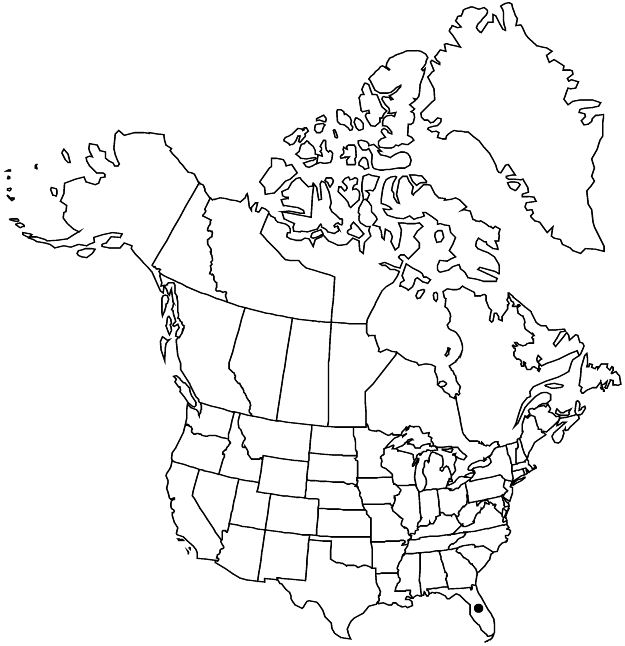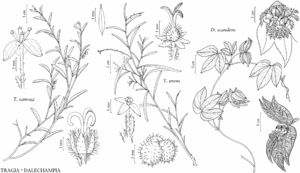Dalechampia scandens
Sp. Pl. 2: 1054. 1753.
Stems 1–5 m, hirsute, with stinging hairs. Leaves: stipules lanceolate to ovate, 3–8 × 2 mm; petiole 2–8 cm; blade ovate, 3–10 × 3–13 cm, usually deeply 3-lobed, base shallowly to deeply cordate, margins weakly serrulate-crenulate, apex acute or acuminate. Inflorescences: peduncle of inflorescence 2–6 cm; involucral bracts greenish white at anthesis, broadly ovate, 1.5–3 × 1.5–3 cm, deeply 3-lobed, with 5 major veins; peduncle of staminate cymule 1–10 mm; pistillate cymule nearly sessile. Pistillate flowers: sepals pinnatifid, with stiff, detaching hairs and, often, stalked, resiniferous glands; styles 4–8 mm; stigma 0.5 mm diam. Capsules glabrescent to finely pubescent. Seeds 3.5–4 mm, smooth.
Phenology: Flowering and fruiting year-round, especially at end of summer/rainy season.
Habitat: Dry subtropical forests and scrub.
Elevation: 0–10 m.
Distribution

Introduced; Dry subtropical forests and scrub, Fla., Mexico, West Indies, Central America, South America.
Discussion
Dalechampia scandens is widespread, variable (W. S. Armbruster 1985), and probably a complex of cryptic species (C. Pélabon et al. 2005). The species is naturalized in Broward and Hillsborough counties; the geographic origin of these populations is uncertain (see R. W. Pemberton and H. Liu 2008b).
Selected References
None.
